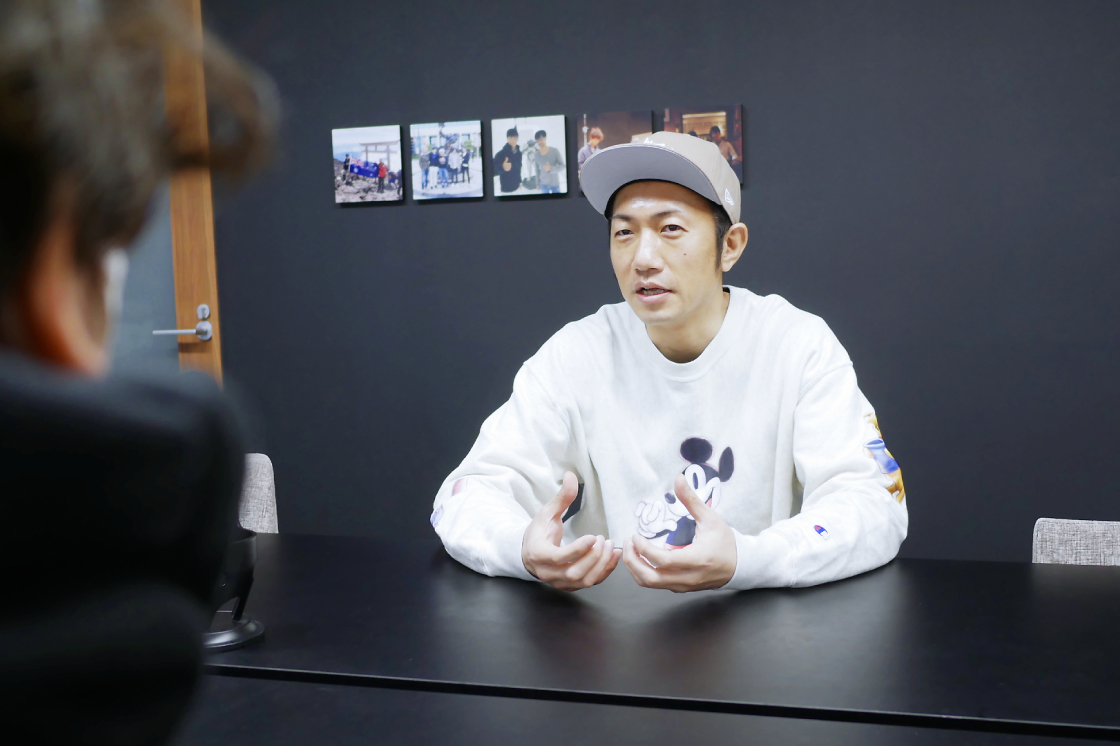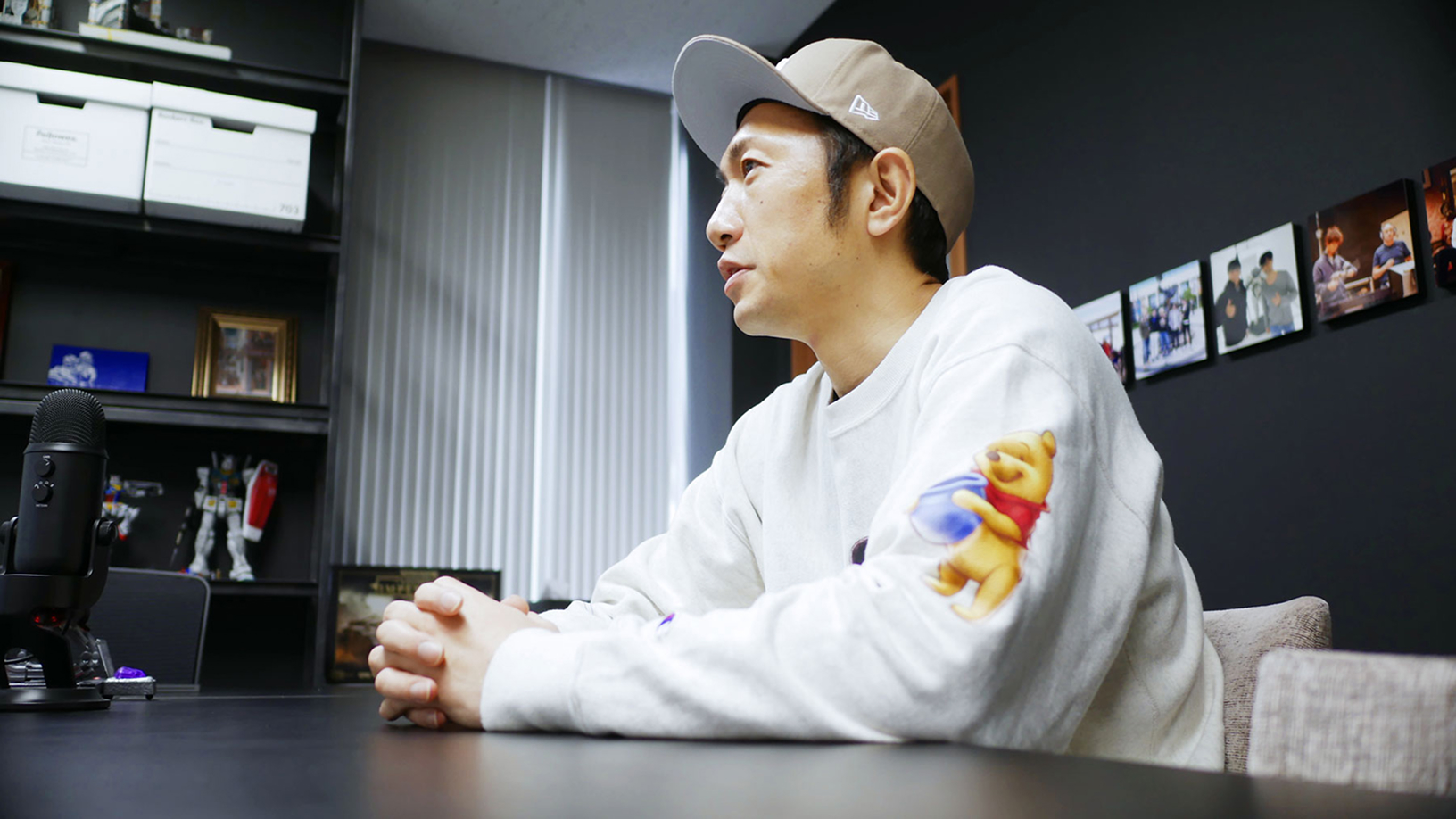
Standing Out in Background Production—From AAA Games to Netflix and Beyond
Director/Environment Modeling SupervisorTakuya Suzuki
As SAFEHOUSE's director, Takuya Suzuki has contributed his background artistry expertise to prestigious titles including FINAL FANTASY XVI, RESIDENT EVIL: INFINITE DARKNESS, and Gundam: Requiem for Vengeance. While collaborating on major productions across global markets, he remains committed to mentoring emerging talent. In this interview, he reflects on his artistic evolution and shares his vision for the future of background design.
What are your strengths as an artist?
I entered the industry with no prior knowledge of art. Blizzard Entertainment is full of people who express themselves creatively in many ways. Some are formally trained artists, others pursue passions like photography alongside their CG work, and still others explore analog art forms like sculpture. I joined the company because I could use software to create backgrounds and make cool things, and I feel like Ichiro in baseball (laughs). “I may not hit home runs, but I have a solid batting average.” I might not be able to produce something amazing all at once, but if you let me handle it, you can definitely count on me to create something great. I would say things like, “This is what the art director is referring to,” or “To incorporate that idea, I would go to...".
My goal is to create a visual that says, 'Here's exactly the background this scene needs!' I make sure to hit my bases – delivering what the directors want, precisely when they need it. I might steal a base now and then, taking a calculated risk because I believe it'll advance the scene. Sometimes that leads to a home run, exceeding expectations. But my career at Blizzard Entertainment has been built on consistently getting on base – making solid, reliable contributions that score points for the team.
Is it possible to be an artist without having studied fine arts?
I believe we can make up for this by changing our approach. For instance, drawing helps develop observation skills. You need to understand what you see, break it down in your mind, and then recreate it. I do the same process in my head, but instead of a pen, I use a mouse. I think I've practiced this more than most people. Additionally, I always take a shape from a single perspective rather than relying on three-view plans (front/elevation view, top/plan view and end/profile view). If I used three-view drawings, anyone could replicate the shape, so I put in extra effort (laughs). Essentially, I visualize the proportions and depths in my mind before creating the shape digitally. When I model, I impose more “constraints” on myself than others do. I believe this helps compensate for my artistic background, and my unique approach may be what sets me apart from other artists.
“More and more small companies are able to create realistic images, but they often struggle to produce truly impressive work. However, there are only a few companies that can actually make those impressive creations.”
Were you initially interested in working with Unreal Engine?
Initially, I had no interest in real-time technology. While I had seen some videos made with real-time engines during my time at Blizzard Entertainment, they looked like games to me. I felt I could never match the quality of Hollywood-style visuals created with complex simulations and calculations. A few years later, I met Erasmus Brosdau, who is now the art director at SAFEHOUSE. I was blown away by the real-time rendered images he created using Unreal Engine. The quality was incredible—something I had never seen before—and I realized that this technology could actually be utilized, signaling that a shift was about to happen.
Does using a real-time engine give SAFEHOUSE an advantage in production?
With client requests increasing, our real-time rendering capabilities offer a significant advantage. While I also utilize pre-rendering techniques, my focus remains on crafting compelling visuals, regardless of the method. Many companies can produce realistic architectural renderings, but few can effectively arrange those buildings to achieve a truly striking aesthetic. Pure realism isn't enough; it needs artistic expression. Unreal Engine empowers our artists to achieve this expressive quality in real time. At SAFEHOUSE, we pride ourselves on our unique artistic vision, even within the scope of smaller projects.
When do you feel happiest at work?
It's incredibly rewarding when my work shifts a client's perspective. One animation cinematographer told me,”I've always been skeptical of CG backgrounds—they've always felt like mere data to me.” Essentially, he believed CG could never match the emotional depth of hand-painted 2D art.
But after seeing our backgrounds, he admitted, “You've completely changed my perspective.” That moment was profoundly validating—perhaps the most meaningful feedback I've received in my twenty years creating CG. It confirmed that our approach wasn't just technically sound but could genuinely move people and transform how they perceive digital artistry.
You conduct seminars outside of the company as well; do you like teaching?

It might be a bit different from simply liking something. I was fortunate to have been in environments where I learned a lot, both at Square Enix and Blizzard Entertainment. At Square Enix, I had excellent mentors who taught me everything from the basics. However, I also witnessed colleagues who felt overlooked and frustrated. As I mentioned earlier, at Blizzard Entertainment, the artists were very generous in sharing their skills and ideas with me. Because of this background, I feel a strong sense of responsibility as a supervisor and senior team member to help train others.
“When I was a student, I used to collect all sorts of art books. I'm still learning how to incorporate different perspectives into CG!”
Which works have had an impact on you?
Visual arts first captured my interest through my brother, who works in cinematic CG. The film that truly transformed my perspective was 'Star Wars: The Phantom Menace.' I was around 20 when I saw it, and its impact was profound—it sounds almost cliché, but I felt like I'd discovered an entirely new world.
Afterward, I became obsessed, attending Star Wars exhibitions and collecting art books. I was particularly fascinated by the original concept designs and how they translated into three-dimensional spaces. Despite my limited budget, I found creative ways to fund my self-education—I even conducted street interviews with women around town to earn book vouchers. Each interview paid about 1,500 yen. Looking back, my approach to learning was rather unconventional. Perhaps it stemmed from my insecurity about lacking formal art training—I was determined to compensate through sheer persistence.
Do you still engage in study for your creative work?
I've developed a diverse skill set over time, and now I can clearly see what areas I still need to strengthen. That's where my focus is now.
When I was younger, I was drawn to cinemas for big-budget, CG-heavy spectacles—I was essentially educating myself on techniques I hadn't mastered yet. Once I could produce work of comparable quality, that technical curiosity was satisfied, and those flashy CG showcases lost their appeal.
Now I watch films for entirely different reasons—thoughtful color palettes, masterful camera work, or compelling worldbuilding. My interests have evolved from the technology itself to how that technology can create genuine emotional responses.
Look at Pixar and Disney—they've maintained universal appeal despite technological shifts. I study how they use technical elements to enhance storytelling and how environmental design reinforces narrative.
Studio Ghibli's backgrounds are fascinating because they incorporate multiple perspectives within a single frame. This approach packs more information into the standard 16:9 aspect ratio and stimulates viewers' imagination. We can't replicate this in conventional photo-realistic CG—the visual contradiction would break immersion.
We're now researching how CG might create frameworks that allow the brain to process information differently in animated works, beyond what we normally perceive.
What do you think will be expected of environment artists in the future?
It’s quite challenging, but I believe that as AI continues to develop, the actual process of “making things” will diminish. In the future, our focus should shift to properly assessing whether what AI produces is good or bad, rather than just deciding if it’s “cool.” It’s crucial to determine if the visuals align with the storyline. Only humans can make that judgment, so AI-generated content must be refined into an image that resonates with the viewer.
As a result, it will be increasingly important to consider how to present the model in order to create a compelling image, focusing on expressing the model's essence beyond just crafting a good model. CG creators will need to understand why certain things appear appealing and be able to intentionally convey that appeal in their work.
In closing, do you have a message for anyone considering a job at SAFEHOUSE?
It might sound a bit sentimental, but I'm looking for collaborators who bring genuine passion to background artistry—whether they're just starting their careers or bringing years of experience. I want to work alongside people who aren't just technically proficient, but who genuinely love crafting environments that tell stories and convey distinct worldviews.
I value artists who develop their own unique voice and expressive style. At the same time, the ideal colleague isn't rigid or self-contained—they remain open to feedback and willing to evolve. They understand that to create entertainment that resonates globally, you need to balance personal vision with flexibility.
That's the kind of creative community I'm hoping to build—artists who combine individual perspective with collaborative spirit.